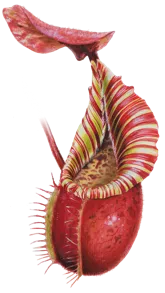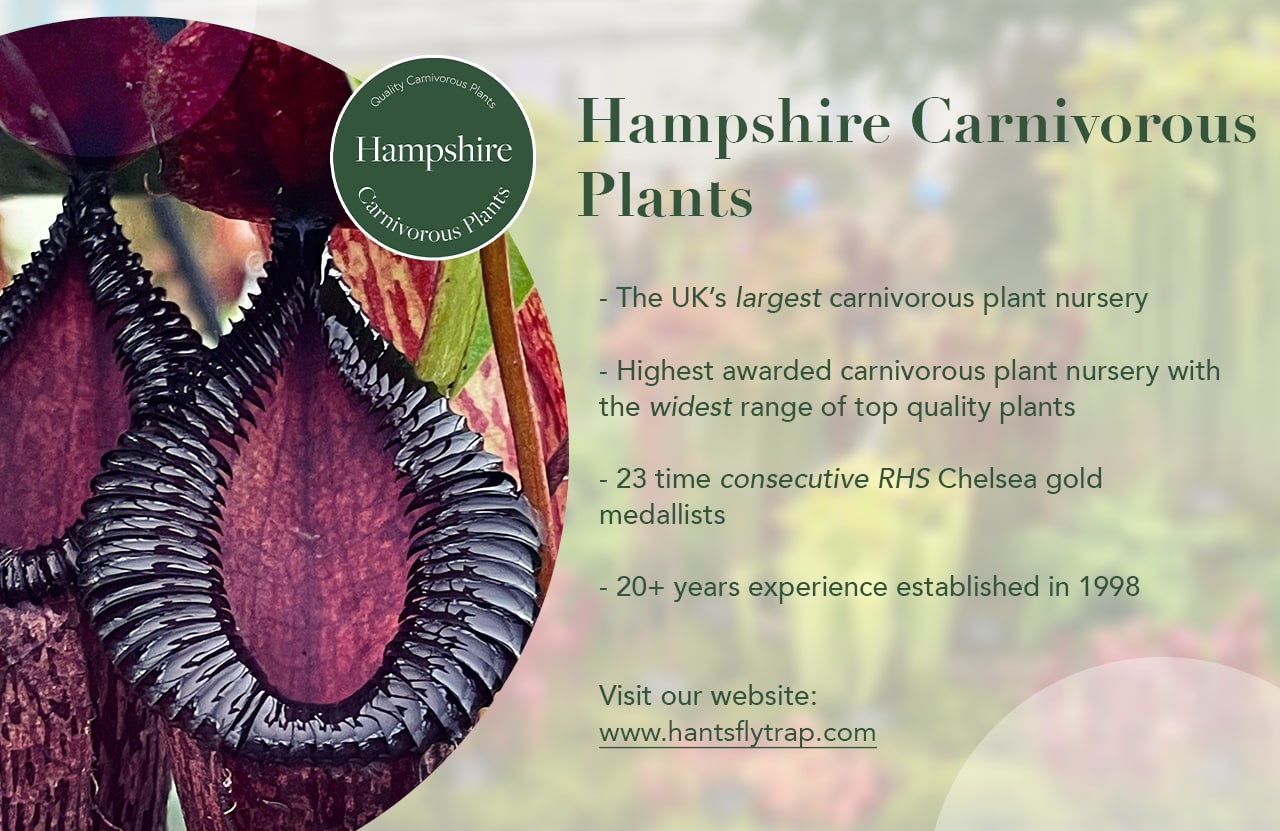Nepenthes villosa
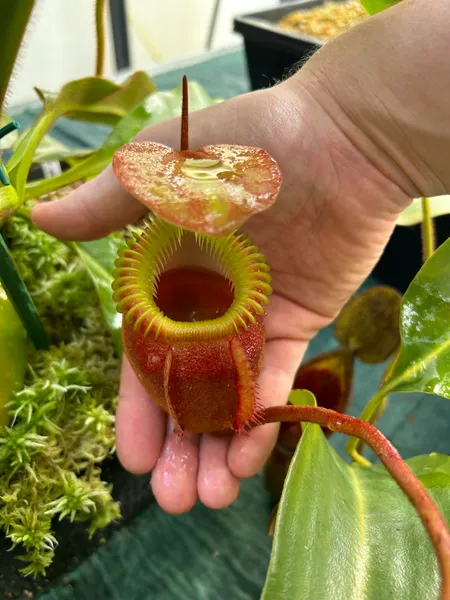 A large Nepenthes villosa, masterfully cultivated by a friend of mine
A large Nepenthes villosa, masterfully cultivated by a friend of mine 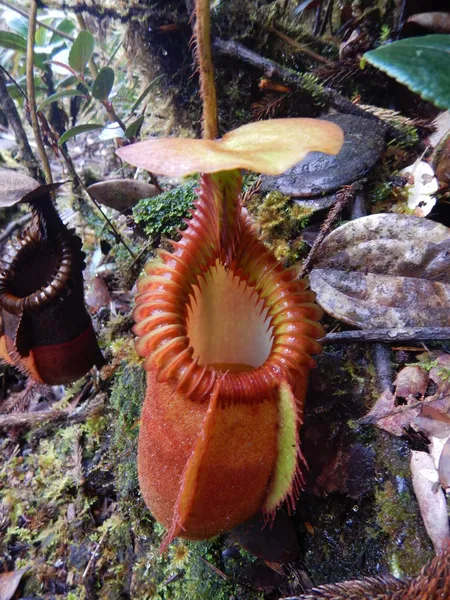 An upper pitcher on N. villosa on Mt Kinabalu, photographed by the late Christophe Maerten
An upper pitcher on N. villosa on Mt Kinabalu, photographed by the late Christophe Maerten 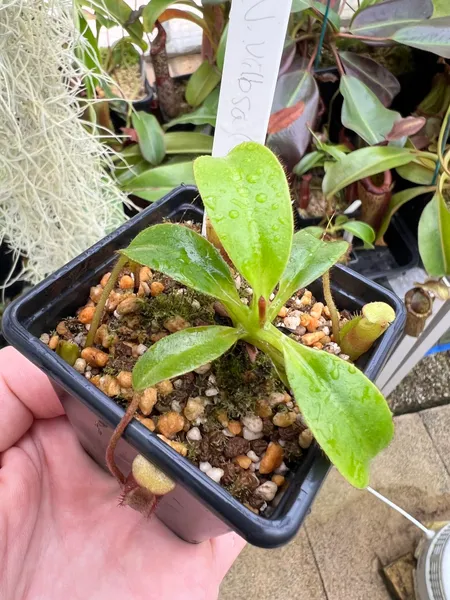 My BE villosa, putting on some size in Spring 2022
My BE villosa, putting on some size in Spring 2022 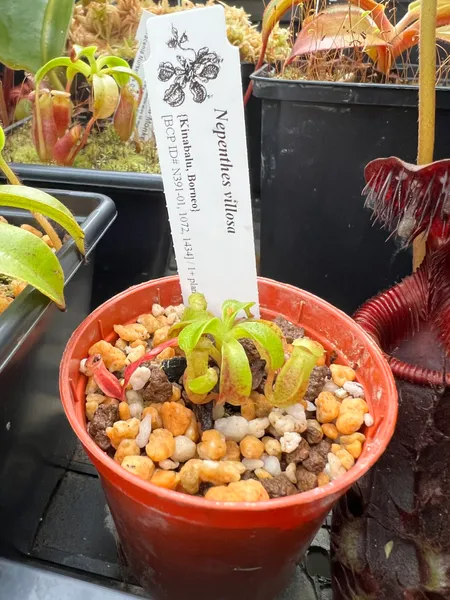 My even smaller N. villosa from BCP!
My even smaller N. villosa from BCP! %20-%20I%20have%20this%20one%20in%20an%20inorganic%20substrate%20as%20an%20experiment.Ciynl1Gn_2exRTU.webp) My small N. villosa (BE-3225) - I have this one in an inorganic substrate as an experiment
My small N. villosa (BE-3225) - I have this one in an inorganic substrate as an experiment Description & Care
For many growers, a successfully cultivated specimen of Nepenthes villosa would be the crown jewel of any carnivorous plant collection. It’s a magnificent and distinctive species from Borneo that’s notoriously slow and fussy about conditions. In that sense, it’s a highly rewarding plant to grow.
This species has a colourful taxonomic history. It was formally described by Joseph Dalton Hooker in 1852, but has at various points in history been grouped together with - or confused with - N. macrophylla, N. edwardsiana, and its natural hybrid with the latter now known as N. × harryana. You can find more detail about the taxonomy of this group on my profiles for those aforementioned species.
Nepenthes villosa grows on the Kinabalu and Tambuyukon mountains in Borneo. It has fairly squat pitchers which in the wild can grow up to 25cm in height. They are famous for their highly developed peristome, which is lined with ferocious teeth rivalling all other toothy Nepenthes species. The species is named for the dense crop of brown hair covering all parts of the plant.
As I said, this is not an easy plant to grow. Such was its reputation and sky-high price, I put off buying N. villosa for many years - I wanted to successfully grow other highlanders before sinking money into such a tricky plant. For that reason, my N. villosa are still very small - this is a species which can famously take well over a decade to reach flowering size. I grow two forms of Nepenthes villosa: the famously tolerant female clone from Borneo Exotics (BE-3225, with red pitchers and yellow teeth) and a clone from BCP.
In terms of cultivation, this is a strict highlander. It needs a good nighttime temperature drop and cannot tolerate temperatures close to 30°C (85°F) for long without declining. My other tip is to be very careful not to let water sit on the leaves, or in the crown. It’s very prone to rot when small. I keep it relatively dry compared to many other Nepenthes, much like my N. edwardsiana plants.
In the wild, Nepenthes villosa forms hybrids with two other species: N. rajah (a hybrid known as N × kinabaluensis) and N. edwardsiana (a hybrid known as N. × harryana). Both are wonderful plants in their own right, and next to impossible to find in cultivation. Thankfully, a number of cultivated Nepenthes villosa hybrids are now being produced by nurseries around the world, and these are proving to be both beautiful and easier to grow than N. villosa. Among them are:
- N. villosa × hamata, N. villosa × robcantleyi, N. villosa × veitchii (from Borneo Exotics),
- N. peltata × villosa, N. spectabilis × villosa (created in Japan)
- N. truncata × villosa, N. burbidgeae × villosa, N. villosa × macrophylla, N. villosa × lowii (created by Jeremiah Harris in the States).
I’m collecting as many of these as I can get my hands on, particularly those with complementary characteristics (i.e. hair + teeth!)
How I Grow It
| Media | Long fibre sphagnum moss, perlite, and - optionally - orchid bark (2:1:1). |
| Water | Damp but never wet. Does not like water sitting on the leaves or in the crown. |
| Light | Very bright, diffused light - can take a bit more than many other highlanders. |
| Fertiliser | Maxsea or liquid orchid feed in the pitchers, every two weeks. |
| Temperatures | 12°C (54°F) minimum year-round. Really doesn't like summer - ideally keep below 25°C (~75°F) at all times. |
| Humidity | 70% during the day rising to over 90% at night, but don't overdo it - young plants are prone to rot if kept too moist. |
Learn more about cultivation with my guide to growing Nepenthes.
Day & Night Temperatures
Nepenthes villosa is a highland species, found at elevations of between 1600 and 3240 meters. This range is highlighted in orange above, and equates to temperatures of approximately 16 - 27°C during the day, and 6 - 17°C at night.
See Also
I've written profiles of the following hybrids involving Nepenthes villosa:
Habitat
| Native to | Borneo |
| IUCN Red List status | Least Concern |
| Natural hybrids | N. edwardsiana, N. rajah |
Buying N. villosa
| Availability | Small plants regularly available from Borneo Exotics distributors, but always expensive and quickly snapped up. Large specimens are truly priceless. |
| Borneo Exotics codes |
|
| Recommended nursery | California Carnivores Hampshire Carnivorous Plants |
